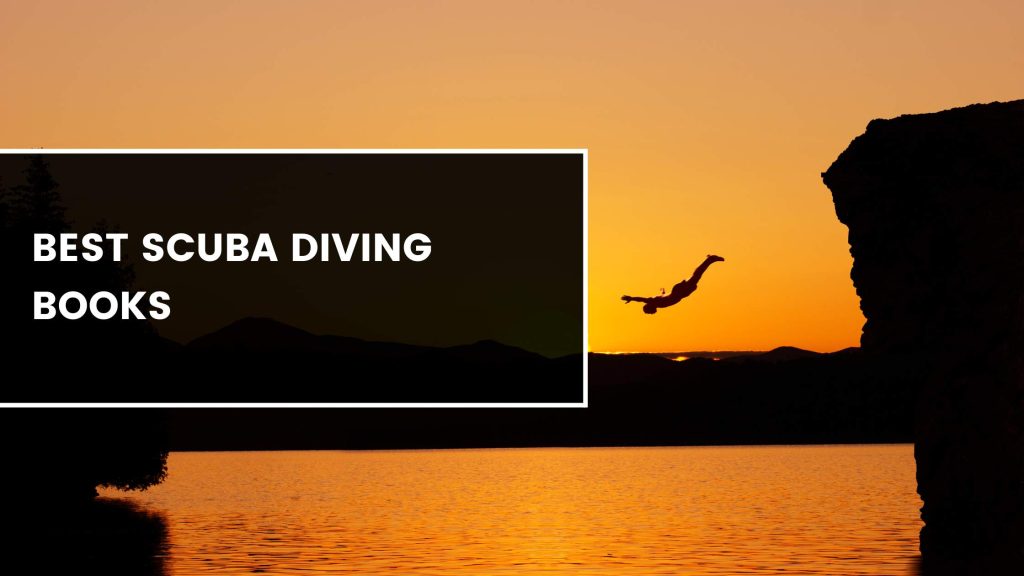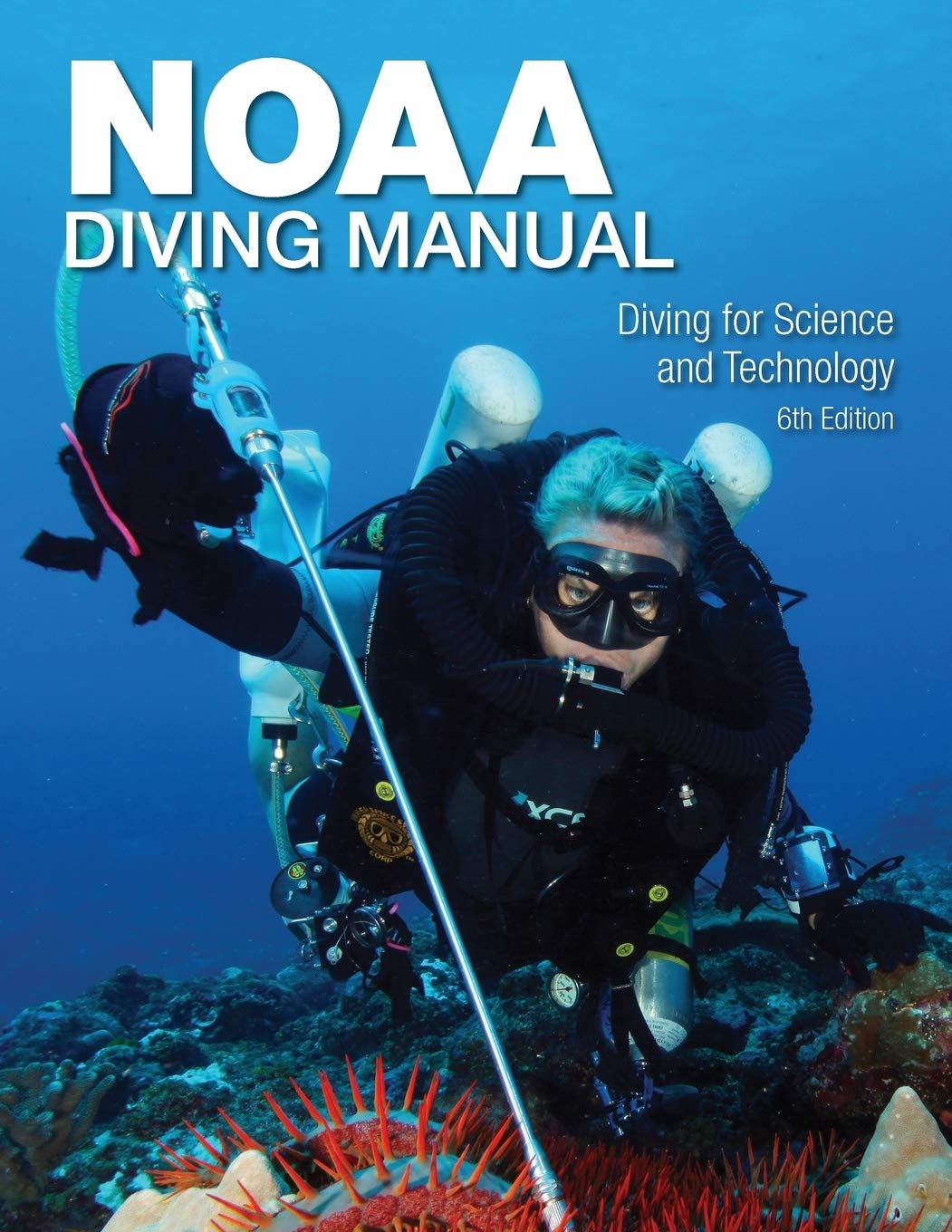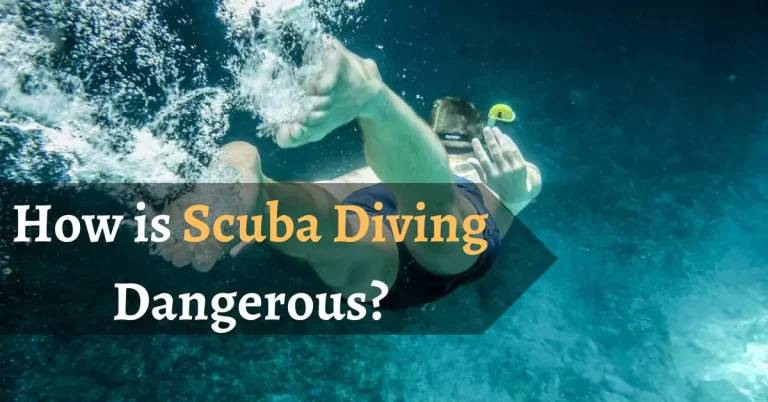Best Scuba Diving Books: Ultimate Buying Guide 2024
Best Scuba Diving Books:
If you are thinking about becoming a scuba diver, you may wonder what books you should read. You want to avoid learning about diving from someone with no experience. Before you make any decisions, here is some advice: the best scuba diving books are written by divers who have been there, done that, and lived to tell about it.
The best scuba diving books are filled with real-life stories from people who were there when things got hairy. They will also teach you important skills that will help make your dives safer and more enjoyable. If this sounds interesting, keep reading: we have compiled a list of the best scuba diving books available today.


- “The Complete Diver: History, Science, and Practice of Scuba Diving” is a must-have for any diving enthusiast.

- The “Commercial Diver Training Manual” is a must-have for aspiring commercial divers.
The Top 11 Best Scuba Diving Books Are Given Below
The Complete Diver: History, Science, and Practice of Scuba Diving
“The Complete Diver: History, Science, and Practice of Scuba Diving” is a must-have for any diving enthusiast. This comprehensive guide delves into the rich history of diving, from the earliest underwater explorations to modern technology. It also covers the science behind diving, including the physics and physiology of diving, making it an excellent resource for all.
But what sets this book apart is its practical approach. The authors take the reader through every step of a dive, from planning and preparation to the dive itself and the post-dive debrief. This level of detail makes it easy to understand the complexities of diving and how to stay safe while underwater.
It is also filled with stunning photographs and illustrations that transport the reader to the ocean’s depths. The author’s witty and engaging writing style makes the book a pleasure to read, and it is easy to get lost in the stories and information.
Overall, “The Complete Diver” is an excellent resource for anyone interested in diving. No matter if you are an expert or starting, this book has something for you. It is a must-read for any diving enthusiast looking to expand their knowledge and hone their skills. So, grab your scuba gear and dive into “The Complete Diver”!
Commercial Diver Training Manual
The “Commercial Diver Training Manual” is a must-have for aspiring commercial divers. This manual is jam-packed with all the information you need to know to become a professional underwater welder, construction worker, or salvage specialist. First off, the layout of the manual is top-notch.
The manual covers everything from dive physics to underwater welding techniques. It is easy to navigate and find the information you are looking for. Moreover, the illustrations and diagrams are so good you will feel like a kid in a coloring book (but for grown-ups).
It includes information on dive medicine and emergency procedures, which is essential for any diver. But let’s be honest. This manual’s best part is the underwater cutting and welding section. It is like reading a superhero comic book, but you have wet suits and cutting torches instead of capes and tights.
Overall, the “Commercial Diver Training Manual” is a fantastic resource for anyone looking to break into the commercial diving industry. It is comprehensive, easy to understand, and will have you daydreaming about becoming a real-life Aquaman in no time. In short, it is a manual that packs a punch and is a worthy investment for everyone.
Scuba Fundamental: Start Diving the Right Way (The Scuba Series)
“Scuba Fundamental: Start Diving the Right Way” is an essential guide for any new diver looking to enter the underwater world. It is a wonderful resource for those who want to start scuba diving. The author does an excellent job of breaking down complex concepts and explaining them clearly and concisely. It is well-organized and easy to navigate, making it accessible for readers of all levels.
The illustrations and diagrams throughout the book are of high quality, providing additional visual aid for the reader. It covers all the necessary information for new divers, including dive gear and equipment, dive planning and safety procedures, and dive physiology and emergency procedures. This information is presented in a logical and easy-to-follow format, making it an ideal resource for newbies.
The dive skills and techniques section is particularly noteworthy, providing a thorough and detailed explanation of the various skills required to become a proficient diver. It is written clearly and concisely, making it easy to understand and follow. You will get the necessary help from it.
Ultimately, this scuba diving book is an excellent guide for any new diver. It is comprehensive, well-organized, and provides all benefits for those who want to gain a solid foundation in scuba diving, and I highly recommend it to anyone interested in the sport.
NOAA Diving Manual: Diving for Science & Technology
For professional divers and dive teams engaged in scientific and technological research, the “NOAA Diving Manual: Diving for Science & Technology” is an essential resource. This booklet offers comprehensive details on the particular diving practices, tools, and gear employed in these disciplines.
Everything from dive planning and safety precautions to dive medicine and emergency management are included in the content. The booklet contains complete information on specialist diving gear, such as saturation diving, mixed-gas diving, and closed-circuit rebreathers. Both expert and noob divers can benefit from the manual’s user-friendly structure, which is well-organized and simple to read.
The manual’s thorough section on dive physics provides a complete grasp of the technical components of diving and the rules that govern how gasses and liquids behave underwater. Fascinating is the dive physiology and medicine section, which thoroughly examines the physiological and psychological impacts of diving on the human body. For dive teams and scientists studying these locations, this section is crucial.
For dive teams working on the creation of new technology and diving gear, this part is crucial. It offers in-depth details on the specialized diving techniques, processes, and equipment and is thorough and organized. Any professional diver or dive team engaged in technology and scientific research will find it helpful.
100 Dives of a Lifetime: World’s Ultimate Underwater Destinations
“Dive into the deep end with ‘100 Dives of a Lifetime: World’s Ultimate Underwater Destinations’ – a book that promises to be your ultimate guide to the world’s most breathtaking underwater sports. Scuba enthusiasts will find this book to be a treasure trove of information.
It features some of the most exotic and hard-to-reach dive sites on the planet. From the crystal clear waters of the Great Barrier Reef to the mysterious depths of the Red Sea, this book has got it all. But it is not just about the destination. The book also delves into each site’s unique marine life and history.
Whether a history buff or a marine life enthusiast, this book has something for everyone. The book’s design is also worth a mention. It is a feast for the eyes with its stunning photographs and illustrations that will leave you longing to pack your bags and head to the nearest dive spot.
‘100 Dives of a Lifetime’ is a must-have for any diving enthusiast. It is an entertaining, informative, and visually stunning guide to the world’s ultimate underwater destinations. Whether you are an expert or aspirant, this book will take you on a journey to the ocean’s depths that you will never forget.”
Dive Atlas of the World: An Illustrated Reference to the Best Sites (IMM Lifestyle Books)
The Dive Atlas of the World is an illustrated reference guide to some of the best diving sites worldwide. The book is organized by region, with detailed information and beautiful photographs of each location. The descriptions include the best times to visit, the types of marine life that can be found there, and any potential hazards divers should be aware of.
The book also includes tips on planning a dive trip and what equipment to bring. It is an excellent resource for divers of all levels of experience. The photographs are stunning and give readers a sense of what they can expect to see underwater. The information provided is detailed and accurate, and the book’s organization makes it easy to find the information you’re looking for.
The tips on planning a dive trip and what equipment to bring are also helpful. One of the book’s highlights is its focus on diving safety, which is vital for all divers to be aware of. The book also includes a wealth of information about the environmental and conservation issues many of the featured sites face.
Finally, Dive Atlas of the World is a must-have for any diver’s library. The photography is beautiful, the information is accurate and well-organized, and the book provides great inspiration for planning future dive trips. It is a well-rounded guide to some of the best diving sites worldwide.
Cold Water Diving: A Guide to Ice Diving
“Cold Water Diving: A Guide to Ice Diving” is a comprehensive guide for divers looking to explore the unique and challenging environment of ice diving. An experienced ice diver and instructor wrote the book. And covers all aspects of this specialized form of diving, from equipment and safety considerations to dive planning and execution.
The best part is it provides the unique equipment and safety protocols required for ice diving. You will learn about types of wetsuits and drysuits that are best suited for cold water diving and the specialized equipment needed to navigate through the ice safely. The book also provides a thorough overview of the risks and hazards associated with ice diving.
The author’s emphasis on dive planning and execution is the plus point of this scuba diving book. Moreover, this book provides a step-by-step approach to planning and executing an ice dive. It includes tips on navigating through the ice and communicating underwater with dive partners. It also has a section on underwater navigation and search and recovery techniques.
Ultimately, it is an incredible resource for divers looking to expand their diving horizons and explore the unique and challenging environment of ice diving. The author’s extensive experience and knowledge of the subject are evident throughout the book, and the guide provides a wealth of practical information and tips for divers of all levels.
Deep Into Deco: The Diver’s Decompression Textbook
“Deep Into Deco: The Diver’s Decompression Textbook” is the ultimate guide for divers looking to expand their knowledge and understanding of the complex world of decompression. Written by a seasoned technical diver and instructor, this book is packed with witty and relatable anecdotes. Therefore, it is an enjoyable read for any diver looking to dive deeper and stay underwater longer.
In this book, the author breaks down complex decompression theory and dive planning into simple terms. He explains the science behind diving, the physiological effects of pressure, and the importance of dive planning in an engaging and informative way. It has a full section on dive tables and computers, with clear explanations of how they work and how to use them safely.
The author also covers the various types of decompression diving, including technical diving, cave diving, and rebreather diving. He provides a thorough overview of the equipment, techniques, and risks associated with each type of diving and offers practical advice on mitigating those risks. The book provides a section on emergency procedures and how to handle common diving accidents.
In the end, it is a must-read for any diver looking to expand their knowledge and understanding of the complex world of decompression diving. The author’s professional and relatable writing style makes it an invaluable resource for any diver. Whether you are a recreational or technical diver, this book will definitely increase your knowledge.
Scuba Diving: The Authoritative Guide to Safe, Enjoyable Diving
“Scuba Diving: The Authoritative Guide to Safe, Enjoyable Diving” is the ultimate guide for both new and experienced divers looking to improve their diving skills and knowledge. Written by a pro diver and instructor with many years of experience, this book is packed with comprehensive and practical information on all aspects of scuba diving.
This scuba diving book provides the essential skills and knowledge required for safe diving. The author covers everything from the basic principles of diving physics and physiology to dive planning and execution. It has a section on dive equipment and how to maintain it properly and a chapter on dive computers and tables, which are essential tools for any diver.
A plus point of the guide is the author’s emphasis on dive planning and execution. He provides a step-by-step approach to planning and executing a dive, including tips on navigating underwater, communicating with dive partners, and handling common diving emergencies. The book also includes a guise on dive planning software and how to use it effectively.
It is a must-have guide to improving skills and knowledge if you are an aspiring diver. The author’s extensive experience and knowledge of the subject are evident throughout the book. Moreover, the guide provides many practical tips for divers of all levels. If you want to dive deeper and stay underwater longer, it is an essential guide to help you achieve your goals safely and enjoyably.
The Commercial Diver’s Handbook: Surface-Supplied Diving, Decompression, and Chamber Operations
The “Commercial Diver’s Handbook: Surface-Supplied Diving, Decompression, and Chamber Operations” is an essential guide for anyone working in the commercial diving industry. It is packed with valuable information, including best practices for surface-supplied diving, detailed explanations of decompression procedures, and information on chamber operations. The book is written clearly and concisely, making it easy to understand even for those new to the field.
I find the level of detail provided in this book to be one of its best features. The author does an excellent job of explaining complex concepts in a way that is easy to understand. It is also well-organized, making it easy to find your needed information. The illustrations and diagrams throughout the book are beneficial in visualizing the concepts discussed.
The “Commercial Diver’s Handbook” is an excellent resource for experienced divers and those new to the industry. It is a comprehensive guide that covers a wide range of topics and provides valuable insights into commercial diving. I recommend this book to anyone working in the field or considering a career in commercial diving. With this valuable guide, you become a safer, more skilled diver.
Simply put, if you are looking for a comprehensive guide to surface-supplied diving, decompression, and chamber operations, this book is for you. This scuba diving book is written in an easy-to-understand style, with plenty of practical tips and real-world examples to help you master the trade. It is an essential tool for any commercial diver and a great resource for anyone interested in the field.
Scientific Diving Techniques: A Practical Guide for the Research Diver
“Scientific Diving Techniques: A Practical Guide for the Research Diver” is essential for any professional or aspiring research diver. Written by experienced dive instructor and researcher Dr. Richard Murphy, this book provides a comprehensive and easy-to-understand overview of the techniques and procedures used in modern scientific diving.
The author’s ability to break down complex diving concepts and procedures into simple, easy language is its signature feature. It will help you understand the basics of scientific diving, including dive planning, safety procedures, and equipment maintenance. So, both newbies and professionals can take advantage of this book.
The book is also filled with helpful tips and real-world examples, making it a precious resource for anyone looking to improve their diving skills. The author’s years of experience in the field are evident in the wealth of knowledge and expertise he shares in this guide.
Overall, “Scientific Diving Techniques: A Practical Guide for the Research Diver” is a must-have for any professional or aspiring research diver. It is a comprehensive, easy-to-understand guide that will help you become a more skilled and safe diver. Are you serious about diving and want to get the most out of your experience? I recommend picking up this book.
Buying Guide
When buying a scuba diving book, these are some factors you need to look for:
- Relevance To Your Level Of Diving Experience: Look for a book appropriate for your current level of diving experience. For example, if you are a beginner, you will want a book that covers the basics and provides step-by-step instructions.
- Quality Of Illustrations And Images: Scuba diving books often include photographs and illustrations of dive sites, marine life, and equipment, so make sure the images are of high quality and help to explain the text visually.
- Clarity And Organization Of The Content: The book should be well-organized and easy to understand. Look for a book that uses clear and concise language and has a logical flow of information.
- Quality Of Author: Look for books from reputable authors or instructors with extensive scuba diving experience.
- Reviews: Look for reviews and feedback on the book, and read what other divers say about it.
- Additional Resource: Check if the book has additional resources, such as online videos or quizzes, to help you better understand the material.
- Up-To-Date Information: Make sure the book you buy is up-to-date with the latest dive techniques, safety procedures, and gear information.

Frequently Asked Questions (FAQs)
- Scuba Diving’s “Golden Rule”: What Is It?
Whenever you dive, keep your breath continuous and never hold it. Holding your breath while diving can cause serious injury or even death due to the increased pressure at depth. To perform your scuba dive in a better way is called Scuba diving’s “Golden Rule”.
- What Are The Three Types Of Diving?
The three types of diving are recreational, technical, and professional.
- Recreational Diving: It is the most common type of diving and involves diving for pleasure and leisure, typically to depths of 130 feet or less, using basic diving equipment.
- Technical Diving: It involves diving beyond recreational diving limits and may include using specialized equipment and techniques such as decompression diving, using multiple gasses, and diving in overhead environments.
- Professional Diving: It includes a wide range of activities such as commercial diving, scientific diving, military diving, and public safety diving. These divers commonly have more advanced training and equipment, which tend to work in specific diving environments.
- How Deep Should A Beginner Scuba Dive Be?
A beginner scuba diver should start with shallower than 60ft (18m) dives and follow the guidelines of a certified scuba instructor or professional. Before diving deeper, beginners must gain experience and confidence by going in shallower waters. Deeper dives require advanced training and equipment, and the risks increase at greater depths.
Final Words
The best scuba diving books are often written by divers who have been in your shoes. As you can see, the best scuba diving books are quite varied. Next time you want to read a good book about scuba diving, check out one of these. Your knowledge will be significantly expanded. Happy reading!















